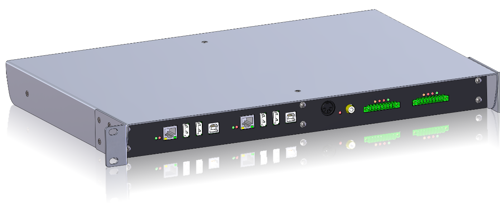Client
Cofely Fabricom, as part of GDF Suez, boasts over 60 years of experience and specialized installations know-how in Electrical & Instrumentation, Piping & Mechanical and Automation & Process Control.
Active in the infrastructure market, they provide citizens with better mobility, public safety and security, and higher levels of convenience and comfort. In that scope, Cofely Fabricom develops and installs automation and surveillance systems to streamline conditions for all transport modes.
Project

This project concerns the audio streaming of dynamic information for the SNCB (NMBS) customers (times of departure and arrival of trains, breakpoints, events, ...) through the railway station sound systems. The voicing inside the stations is performed through a dedicated custom hardware chain linking the central servers that generates, in real time, the audio information to the loudspeakers.
Within this hardware chain, the Audio Management Unit (AMU) is used to dispatch all the audio messages to loudspeakers located throughout the railway station. The AMU requires, for some installation where an important number of audio channels are needed, an extension rack Audio Management Unit Extension (AMUX).
DELTATEC has been selected to develop those two units.
The system can be seen as a multimedia gateway between different inputs:
- a telecommunication network (over IP)
- the call station input (microphone input)
- an auxiliary input (a consumer cd reader for example)
- and the audio amplifiers located next to the loudspeaker in railway stations.
The overall system is controlled by a Linux application developed by Fabricom.
Challenge
The environment in which the system is installed can be severe (i.e.: railway platforms). The units have to be designed to work within extended temperature and humidity ranges.
For reliability purposes, redundancy must be implemented for the processing unit and its connection through the Ethernet link. The design must be fanless.
Audio channels have to be carefully designed to reach good signal performances.
Solution
The AMU is built around a Qseven (http://www.qseven-standard.org/) processing unit (two for redundancy) that provides the required communication interfaces (mainly Ethernet). Audio channels are connected through the standard multichannel High Definition Audio (HDA) Interface.
The AMU integrates an FPGA that decodes the audio contents of the HDA interface and, if needed, composes the streams forwarded to the AMUX.
The AMU is designed to run Linux. DELTATEC has developed the custom drivers needed to control the platform.
The AMU and AMUX are fitted into a 1U 19” chassis. To be fanless, DELTATEC has optimized the thermal management of the electronics by providing a direct thermal path between hot points (Qseven) and the housing. Tropicalization of the PCBs is applied in order to deal with the severe humidity conditions.
Finally, the units have been CE certified by passing successfully the compliance tests of the Electromagnetic Compatibility and the Low Voltage directives.
